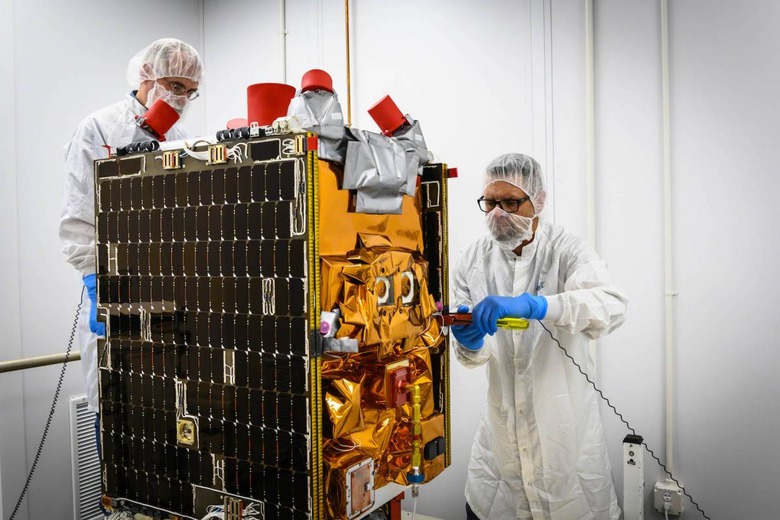NASA Has Big Plans For This Green Rocket Fuel
NASA plans to test out a new, more environmentally-sensitive rocket fuel in an upcoming SpaceX mission, in the hope that it could make future launches greener and more efficient. The new propellant is a homegrown recipe developed by the Air Force Research Lab, and could have huge implications for longer missions like the upcoming trip to Mars.
Currently, rockets and other spacecraft typically use hydrazine. That's a combination of nitrogen and hydrogen, and is highly flammable – just what you want from a rocket fuel. However it's also incredibly difficult to store, manage, and use safely.
Indeed hydrazine is dangerously unstable and highly toxic. It can cause anything from skin irritation through to irritation and burning of the respiratory system, and after longer exposure can lead to nervous system damage and worse. As a result, NASA technicians handling the fuel need to be suited up with oxygen tanks and bulky rubber gloves.
Now, NASA hopes to replace hydrazine with an alternative, easier to handle and less toxic. The blend of hydroxyl ammonium nitrate with an oxidizer also has a big advantage in terms of potency: NASA says that, because it's denser, it offers almost 50-percent better performance.

It's not as simple as draining the tank and filling up with the new fuel, however. The team responsible for the fuel also had to design a whole new set of hardware – from the tanks through to the thrusters, along with the filters, valves, and other pipework in-between – to suit the new propulsion system. The result is a test rig developed by Aerojet Rocketdyne for NASA, with a propellant tank and a quintet of 1-Newton thrusters.
It's known as GPIM, or the Green Propellant Infusion Mission, and the implications should the upcoming test go well are significant. For a start, its greater performance could allow missions to the Moon and then, after that, to Mars to be more efficient. Less fuel would need to be carried in order to travel the same distance.
However smaller missions closer to home could also benefit. One of the biggest costs of launching a new satellite, for example, is rocket fuel. If small satellite and cubesat launches could use GPIM, they could better work around size and budget constraints.
"GPIM has the potential to inspire new ideas and new missions," Christopher McLean, principal investigator for GPIM at Ball Aerospace of Boulder, Colorado, said of the fuel. It could also allow for much faster launch schedules, since filling up a rocket wouldn't demand such careful precautions. "Spacecraft could be fueled during manufacturing, simplifying processing at the launch facility, resulting in cost savings," McLean explains.
GPIM should launch later in the month on a SpaceX Falcon Heavy rocket. It's one of 20+ satellites which will launch as part of the STP-2 mission, currently scheduled to take off on June 24.
